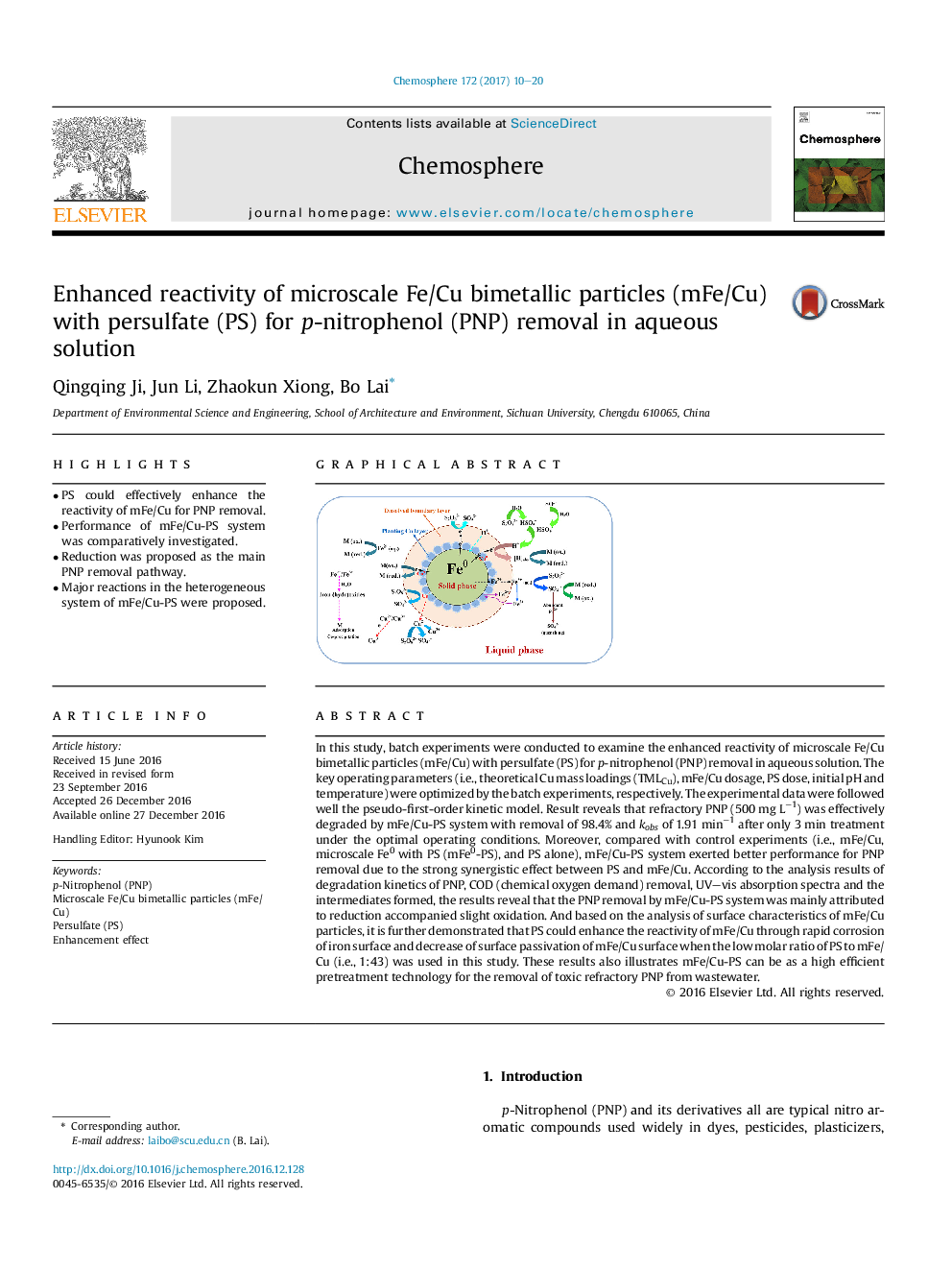| کد مقاله | کد نشریه | سال انتشار | مقاله انگلیسی | نسخه تمام متن |
|---|---|---|---|---|
| 5747091 | 1618799 | 2017 | 11 صفحه PDF | دانلود رایگان |

- PS could effectively enhance the reactivity of mFe/Cu for PNP removal.
- Performance of mFe/Cu-PS system was comparatively investigated.
- Reduction was proposed as the main PNP removal pathway.
- Major reactions in the heterogeneous system of mFe/Cu-PS were proposed.
In this study, batch experiments were conducted to examine the enhanced reactivity of microscale Fe/Cu bimetallic particles (mFe/Cu) with persulfate (PS) for p-nitrophenol (PNP) removal in aqueous solution. The key operating parameters (i.e., theoretical Cu mass loadings (TMLCu), mFe/Cu dosage, PS dose, initial pH and temperature) were optimized by the batch experiments, respectively. The experimental data were followed well the pseudo-first-order kinetic model. Result reveals that refractory PNP (500 mg Lâ1) was effectively degraded by mFe/Cu-PS system with removal of 98.4% and kobs of 1.91 minâ1 after only 3 min treatment under the optimal operating conditions. Moreover, compared with control experiments (i.e., mFe/Cu, microscale Fe0 with PS (mFe0-PS), and PS alone), mFe/Cu-PS system exerted better performance for PNP removal due to the strong synergistic effect between PS and mFe/Cu. According to the analysis results of degradation kinetics of PNP, COD (chemical oxygen demand) removal, UV-vis absorption spectra and the intermediates formed, the results reveal that the PNP removal by mFe/Cu-PS system was mainly attributed to reduction accompanied slight oxidation. And based on the analysis of surface characteristics of mFe/Cu particles, it is further demonstrated that PS could enhance the reactivity of mFe/Cu through rapid corrosion of iron surface and decrease of surface passivation of mFe/Cu surface when the low molar ratio of PS to mFe/Cu (i.e., 1:43) was used in this study. These results also illustrates mFe/Cu-PS can be as a high efficient pretreatment technology for the removal of toxic refractory PNP from wastewater.
281
Journal: Chemosphere - Volume 172, April 2017, Pages 10-20